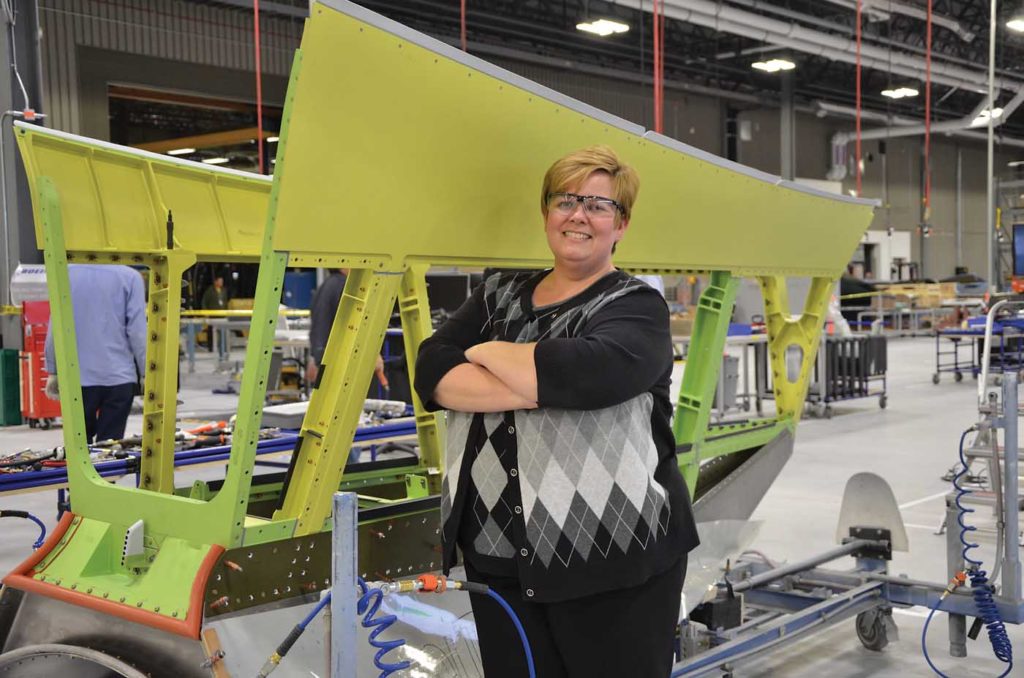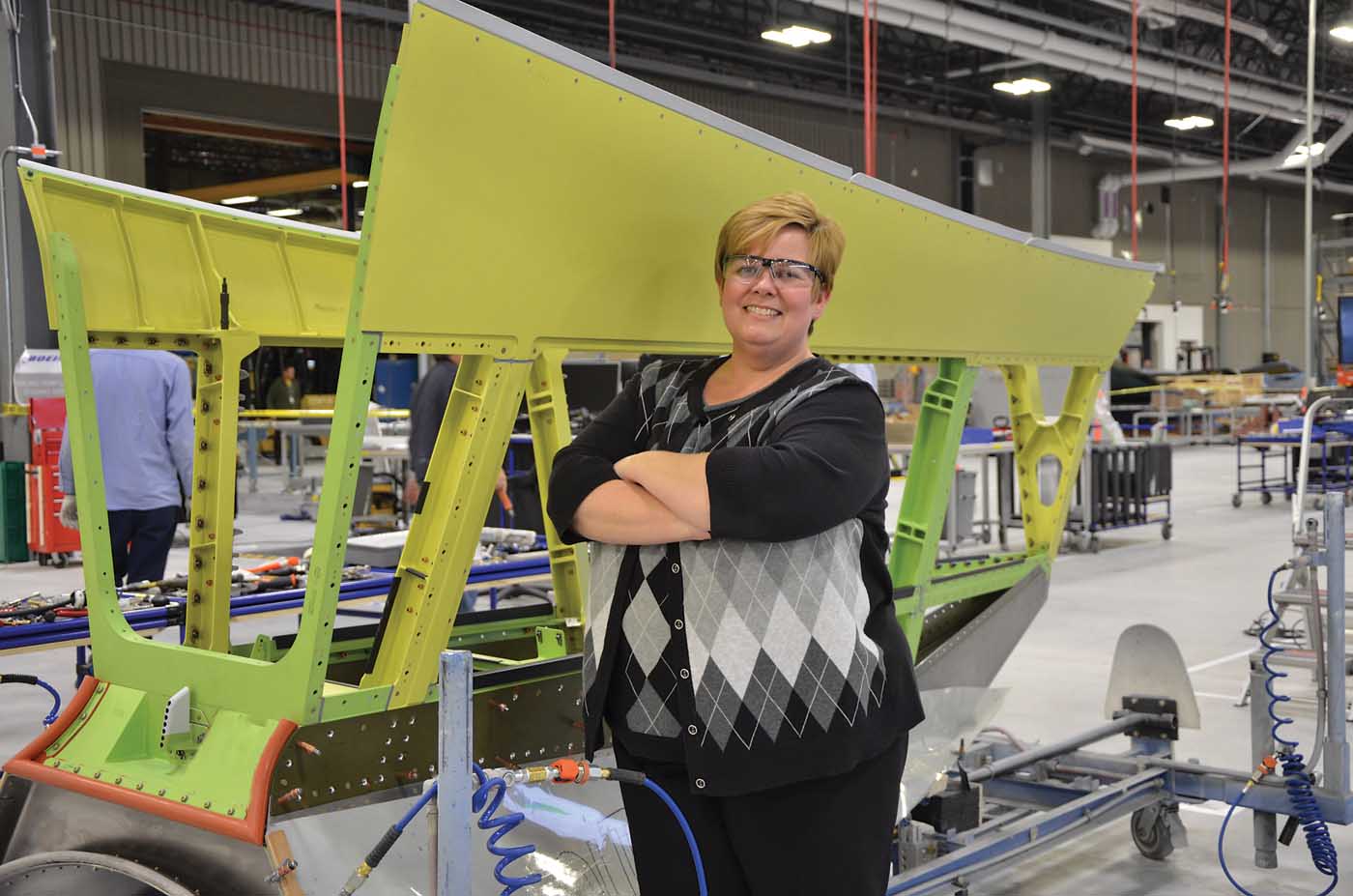Estimated reading time 4 minutes, 21 seconds.
Boeing Co. has turned the page on a cross-border trade dispute as the U.S.-based plane maker looks to strengthen its relationship with Canada.

Canada is the second-largest single contributor to Boeing’s global supply chain, trailing only Japan, said Kim Westenskow, managing director for Boeing in Canada.
Looking to the future, Westenskow said Canada is well-positioned to benefit in the aviation sector.
“Aerospace is growing around the world. Having Boeing’s second-largest commercial supply chain in Canada means growth and progress for us,” she said in an interview with Skies. “It’s about manufacturing in Canada and growth in the aerospace industry.”
She noted that Boeing deals with more than 560 suppliers in Canada, who employ some 17,500 workers. Boeing itself employs 2,100 people across the country, including more than 1,500 employees in Winnipeg, which is one of 13 Canadian locations that help support Boeing’s commercial and defence operations.
The Winnipeg plant is a key commercial facility for Boeing, providing a wide range of items from composite parts to landing gear doors.
“We have a presence across Canada,” said Westenskow, an industry veteran who joined Boeing in 1989. “If you look at my supply chain in Canada, a lot of the parts consumed in Winnipeg come from Ontario and Quebec.”
Boeing has nearly 400 staff in the Vancouver region (working on areas such as providing maintenance software) and about 70 in Montreal (a Boeing subsidiary, Jeppesen, specializes in crew management and logistics software).
The U.S. aircraft manufacturer is keeping a watchful eye over European-based plane maker Airbus SE, especially with rival Airbus forging new links with Montreal-based Bombardier Inc.’s C Series program.
Final assembly of the C Series takes place at Bombardier’s Mirabel plant in Quebec. But last October, Bombardier signed a deal with Airbus to create a joint venture that will result in a second assembly line for the C Series–to be opened in Alabama, targeted at potential U.S. customers for the narrow-body jet.
Boeing had criticized the Alabama joint venture, before the U.S. International Trade Commission (ITC) ruled in January in favour of the C Series. The ITC dismissed a U.S. Department of Commerce decision that had slapped hefty duties on sales of the C Series into the United States.
Boeing decided in late March that it will not appeal the ITC’s ruling. The Chicago-based company had argued unsuccessfully that its 737 MAX narrow-bodies faced direct competition due to the C Series allegedly having subsidized pricing.
Industry observers note that instead of dwelling on the trade dispute that made headlines in the past, Boeing has shifted its energy to playing up its wide-ranging role in Canada.
More than a dozen Canadian airlines fly Boeing aircraft, including Air Canada and WestJet Airlines Ltd.
Calgary-based WestJet launched in 1996 with three Boeing 737-200 jets and relies today on various Boeing models as workhorses, including 737-800 narrow-bodies.
WestJet added Bombardier Q400 turboprops with the launch of the carrier’s Encore regional subsidiary in 2013, and is slated to deploy Boeing 737-800s at its Swoop discount unit in mid-2018.
Air Canada’s fleet, by contrast, includes a mix of Boeing and Airbus aircraft, including a strong Airbus presence for narrow-bodies, and Boeing 777s and 787s dominating the wide-bodies. But Air Canada took delivery of the first of its order of Boeing 737 MAX jets in 2017 as it gradually retires Airbus A320s and A321s.
Montreal-based Air Canada retired the Boeing 747 from its passenger fleet in 2004 and U.S. carriers no longer fly the plane. But some airlines based overseas, such as Germany’s Deutsche Lufthansa AG, still fly the distinctive plane with the humped fuselage.
Hans DeHaan, director in Canada for Lufthansa, said the 747 has an iconic place in aviation history.
“It’s still the Queen of the Skies,” said DeHaan. Lufthansa, however, favours Airbus in its fleet, including the A350 wide-body on the Vancouver-Munich seasonal route.
Air Canada has Embraer regional jets in its current fleet, though it plans to phase out the Embraer 190 narrow-bodies in favour of the C Series, starting in 2019.
Amid the fierce competition, Boeing points out that its roots in Canada run deep. William Boeing, who founded the company in 1916, and pilot Eddie Hubbard flew a C-700 to deliver 60 letters from Vancouver to Seattle in March of 1919.
Almost one century later, Boeing is striving to place the spotlight on the positive economic impacts of Canadian suppliers.
On the defence side, despite the soured relations between Boeing and the Canadian government, Boeing’s Super Hornet fighter jets could be back on the agenda for discussion.
“Boeing and the U.S. government have taken the first step in Canada’s Future Fighter Capability Project (FFCP), and the Super Hornet is among the aircraft included on the FFCP Supplier List by the government of Canada,” a Boeing spokesman said in a statement.
“We continue to believe that the Super Hornet is the low-risk, low-cost approach and has all the advanced capabilities the Royal Canadian Air Force needs now and well into the future.”

